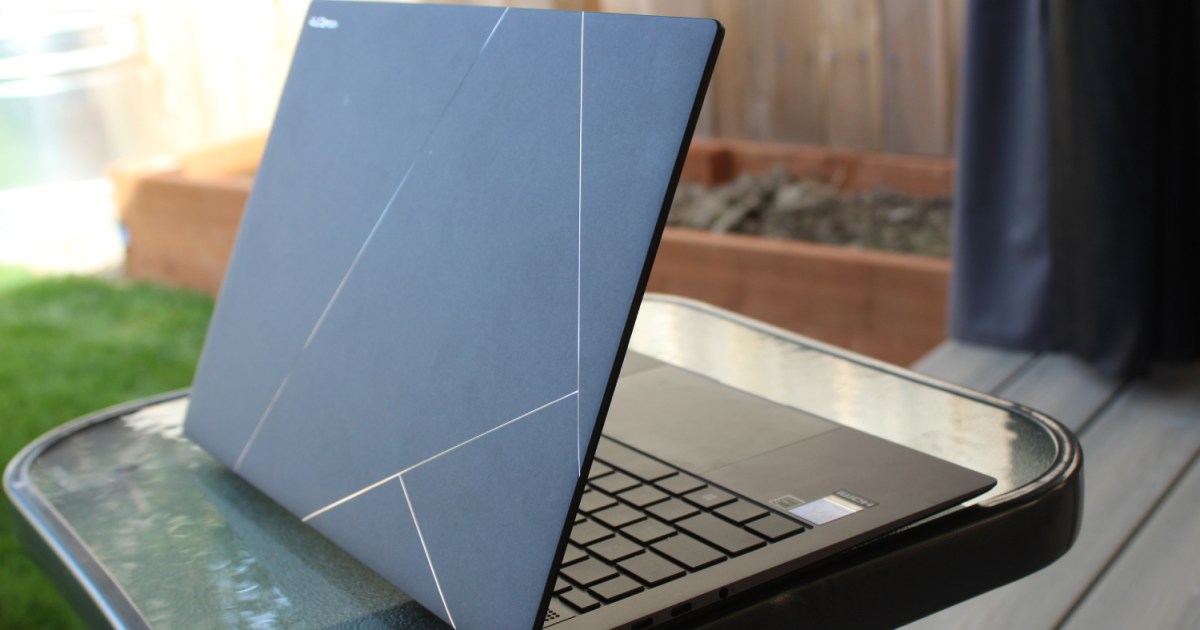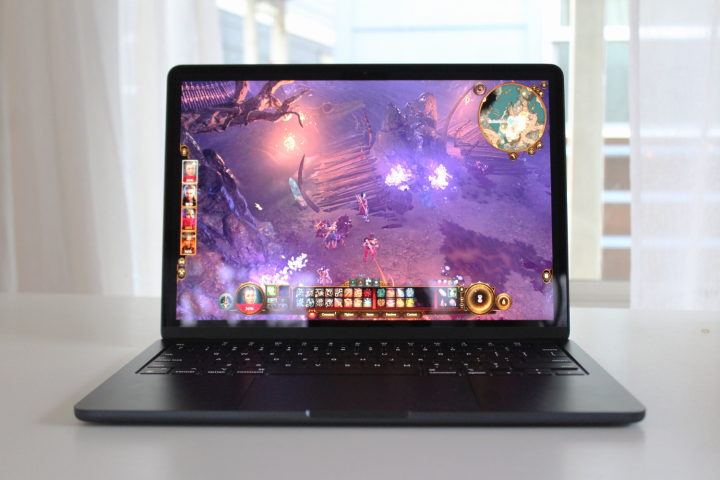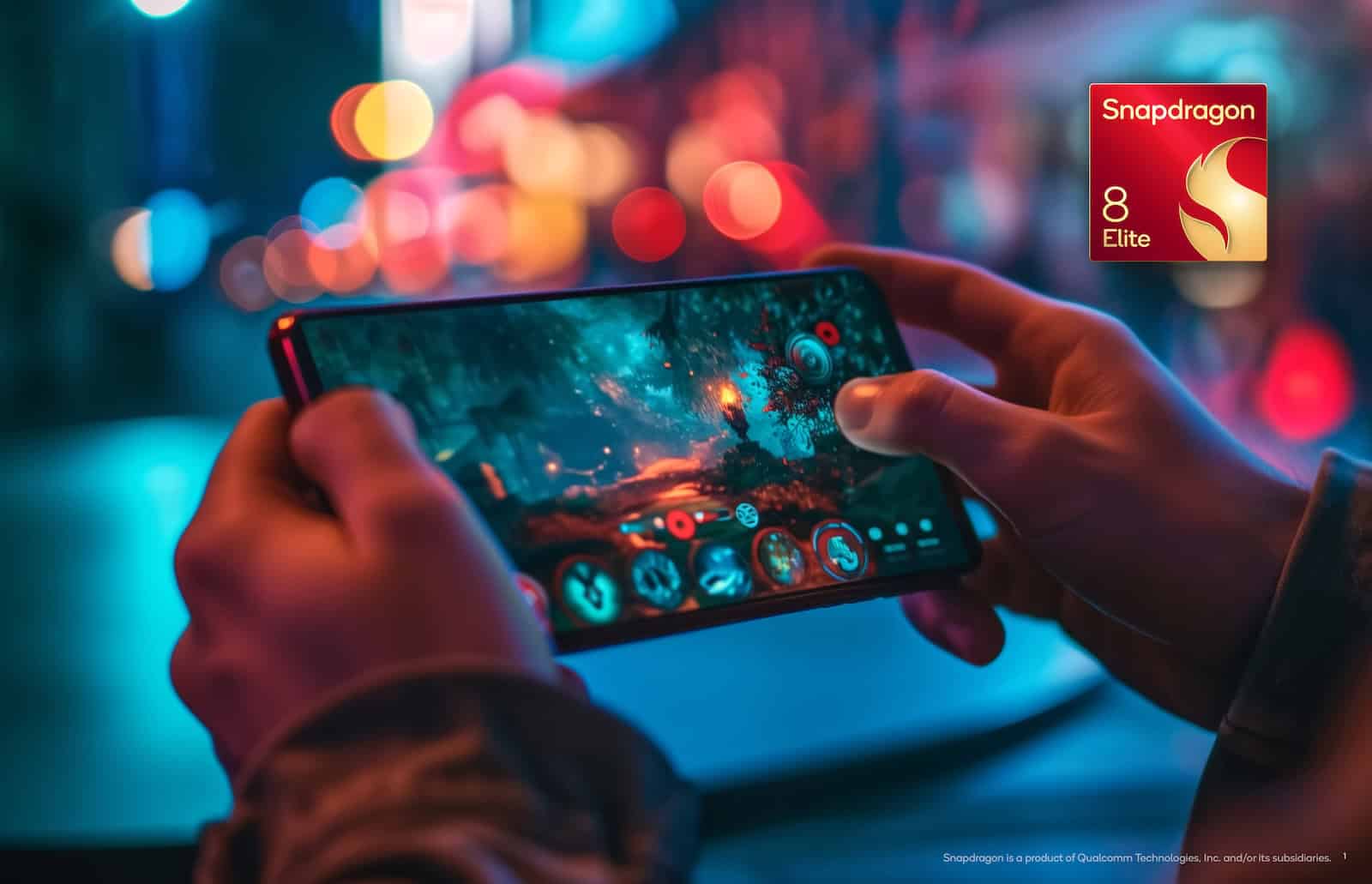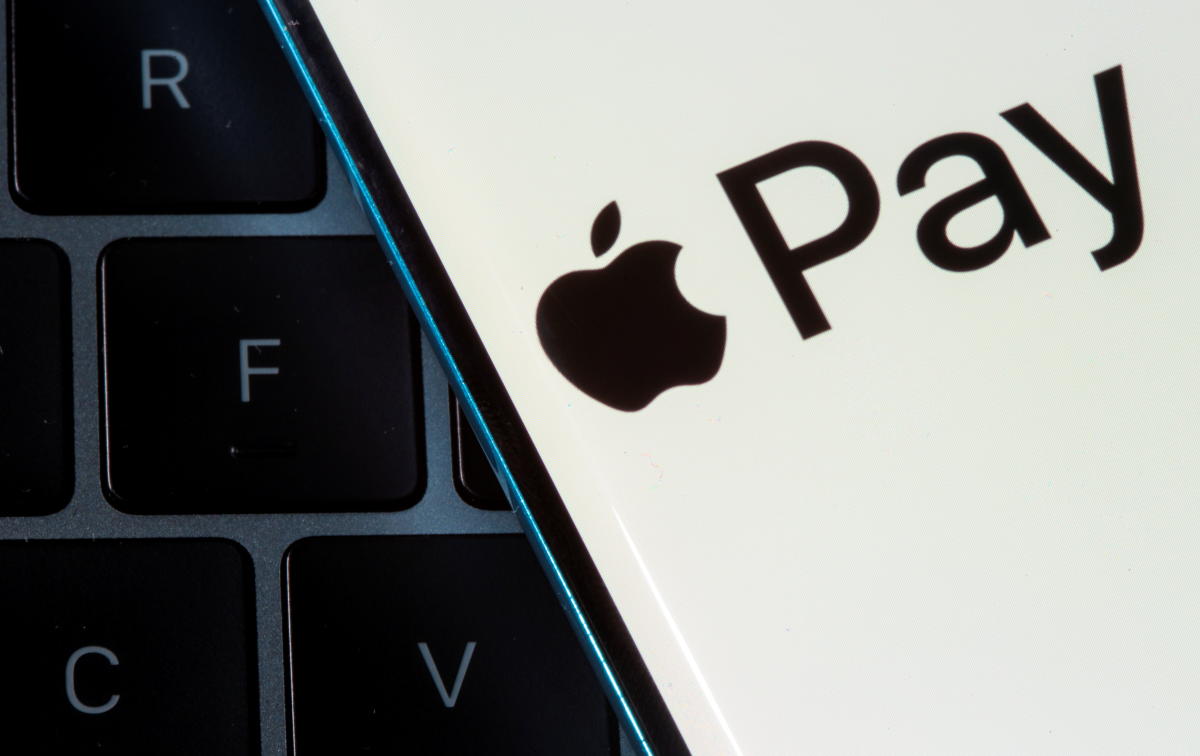Technology
Bloober Team’s next horror game is Cronos: The New Dawn

Bloober Team unveiled what it’s been working on at today’s Xbox Partner Showcase event. The studio showed off a cinematic trailer for Cronos: The New Dawn, which is a brand-new IP.
The developer describes the game as “a twisted time travel story set in an unforgiving post-apocalyptic future.” It’s a third-person survival horror title that looks to have plenty of action. This is a far cry from the type of psychological horror games the studio cut its teeth on, like the Layers of Fear series. We spoke to Bloober Team last year and were told it was moving away from psychological horror and, well, here’s the proof.
The trailer primarily consists of a lengthy scene in which a character who looks sort of like Isaac from Dead Space and a bit like a Big Daddy from Bioshock plays chess with a lady before wandering an apocalyptic hellscape. There is actual gameplay here, but only toward the end of the trailer.
Bloober Team says players will need to successfully navigate that “deadly wasteland” and fight off “monstrous abominations.” It also says the game mixes the “eerie atmosphere of horror with the boundless potential of science fiction.” The trailer certainly confirms that sentiment.
Despite being announced at an Xbox event, Cronos: The New Dawn isn’t exclusive to Microsoft consoles. It’ll be available on PC, PS5 and, of course, Xbox Series X|S systems sometime in 2025. The studio just released its remake of the iconic horror game Silent Hill 2.
Technology
Asus Zenbook S 14 vs. MacBook Air M3: impressively close


Apple’s MacBook Air M3 represents the latest of the company’s very successful thin-and-light laptops built around Apple Silicon’s fast and highly efficient chipsets. It’s one of the best laptops made, and Windows machines have had a hard time keeping up.
Now, Intel has introduced a new chipset, the Core Ultra Series 2, also know as Lunar Lake, that aims to rectify things with much better efficiency. The Asus Zenbook S 14 is one of the first laptops introduced with the new chipset. Can it compete?
Specs and configurations
| Asus Zenbook S 14 (UX5406SA) | Apple MacBook Air M3 | |
| Dimensions | 12.22 x 8.45 x 0.47-0.51 inches | 11.97 inches x 8.46 inches x 0.44 inches |
| Weight | 2.65 pounds | 2.7 pounds |
| CPU | Intel Core Ultra 7 258V | Apple M3 (8-core) |
| GPU | Intel Arc 140V | 8 GPU cores 10 GPU cores |
| RAM | 16GB LPDDR5X RAM 32GB LPDDR5X RAM |
8GB 16GB 24GB |
| Display | 14.0-inch 2.8K (2880 x 1800) OLED, 120Hz | 13.6-inch 16:10 Liquid Retina (2560 x 1664) IPS |
| Storage | 1TB M.2 NVMe SSD | 256GB SSD 512GB SSD 1TB SSD 2TB SSD |
| Ports | 2 x USB-C with Thunderbolt 4 1 x USB-A 3.2 Gen 2 1 x HDMI 2.1 1 x 3.5mm headphone jack |
2 x USB-C with Thunderbolt 4 1 x 3.5mm audio jack 1 x MagSafe 3 |
| Touch | Yes | No |
| Wireless | Wi-Fi 7 Bluetooth 5.4 |
Wi-Fi 6E Bluetooth 5.3 |
| Webcam | 1080p with infrared camera for Windows 11 Hello | 1080p |
| Battery | 72 watt-hour | 52.6 watt-hours |
| Operating system | Windows 11 | macOS Sonoma |
| Price | $1,399+ | $1,099+ |
| Rating | 4 out of 5 stars | 4 out of 5 stars |
There aren’t many configurations of the Zenbook S 14 available yet. Our review unit costs $1,500 with an Intel Core Ultra 7 258V chipset, 32GB of RAM, a 1TB SSD, and a 14-inch 2.8K OLED display.
The MacBook Air M3 has several options. The base model costs $1,099 with an 8-core CPU/8-core GPU M3 chipset, 8GB of RAM, a 256GB, and a 13.6-inch 2560 x 1664 IPS display. RAM and storage upgrades include $200 to upgrade to 16GB or 512GB, and $400 to go to 24GB and 1TB. An upgrade to 2TB is a whopping $800. Our review unit cost $1,699 for an 8-core CPU/10-core GPU M3, 16GB of RAM, and a 1TB SSD. The high-end configuration with 24GB of RAM and a 2TB SSD is $2,299.
So, when configured similarly, the MacBook Air M3 is $100 more. That makes them close enough that other factors will weigh more.
Design

The MacBook Air M3 is an incredibly thin laptop while still maintaining Apple’s usual excellent build quality and solid chassis. It’s CNC machined out of a single chunk of aluminum, and it’s an elegant aesthetic in one of four colors. The Zenbook S 14 is a pretty thin laptop as well, and it uses a “ceraluminum” (Asus’ word) material to be very light and yet sturdy. It’s a good-looking laptop as well, coming in either dark gray or white and with a geometric pattern on the lid.
Both laptops have the usual quality hinge that opens with one hand, and while the MacBook Air feels dense and cold in hand, the Zenbook has a warm texture. The bottom line is that nobody is likely to buy either laptop based solely on their look and feel.
The Zenbook S 14 has the very good Asus keyboard that you’ll find on the entire ZenBook line. It has plenty of spacing and large keycaps, as well as light and snappy switches. The MacBook Air uses Apple’s excellent Magic Keyboard, which is my favorite. It has a perfect layout, comfortable keys, and the most precise switches on a laptop today. The Zenbook’s mechanical touchpad feels Ok, but it’s almost too large, leaving a very small palm rest. The MacBook Air’s Force Touch haptic touchpad is perfectly sized and works great, with the Force Click function that adds additional features with a firmer “click.” The keyboard and touchpad are Apple strengths.
Connectivity favors the Zenbook S 14, which has a couple of legacy ports to go with the same two Thunderbolt 4 connections. And it has more up-to-date wireless connectivity. Both laptops have 1080p webcams, and the Zenbook uses an infrared camera with Windows 11 facial recognition compared to the MacBook Air’s Touch ID fingerprint reader. The Zenbook supports Studio Effects software that enhances videoconferencing.
Performance

Intel’s Lunar Lake chipsets are aimed at competing directly with Apple Silicon. We reviewed the Zenbook S 14 with the Core Ultra 7 258V, a 17-watt, 8-core (four Performance and four Low Power Efficient), 8-thread chipset. It uses the newest Intel Arc 140V integrated graphics. The MacBook Air uses Apple’s M3 chipset with eight CPU cores and eight or 10 GPU cores. We reviewed the faster version.
In our benchmarks, the MacBook Air M3 was faster in all but the Handbrake test. It was faster in both single-core and multi-core tests. And its GPU was more than twice as fast in the 3DMark Wild Life Extreme benchmark.
It’s not that the Zenbook S 14 is a slow laptop. It’s just that the MacBook Air M3 is meaningfully faster.
| Geekbench 6 (single/multi) |
Cinebench R24 (single/multi/battery) |
Handbrake | 3DMark Wild Life Extreme |
|
| Asus Zenbook S 14 (Core Ultra 7 258V / Intel Arc 140V) |
2,738 / 10,734 | 112 / 452 | 113 | 3,240 |
| Apple MacBook Air M3 (M3 8/10) |
3,102 / 12,078 | 141 / 601 | 109 | 8,098 |
Display

The Zenbook S 14 uses a 14-inch 2.8K OLED display running at up to 120Hz. It’s a lovely display with OLED’s usual bright, dynamic colors and inky blacks. That compares to the MacBook Air’s 13.6-inch 2560 x 1664 IPS display running at 60Hz.
While the MacBook Air’s display is a very good example of IPS technology, and it’s very bright and reasonably colorful, the Zenbook’s OLED panel has much wider colors and near-perfect blacks. Our review unit had oddly poor color accuracy, but that’s unusual and likely an outlier. The Zenbook’s display will be appreciated by creators and media consumers.
| Asus Zenbook S 14 (OLED) |
Apple MacBook Air M3 (IPS) |
|
| Brightness (nits) |
313 | 496 |
| AdobeRGB gamut | 95% | 87% |
| sRGB gamut | 100% | 100% |
| DCI-P3 gamut | 100% | 99% |
| Accuracy (DeltaE, lower is better) |
4.92 | 1.24 |
| Contrast | 28,310:1 | 1,480:1 |
Portability

The MacBook Air is the thinnest laptop you can buy, and the Zenbook S 14 is only a little thicker. In spite of having a larger display, the Zenbook is around the same width and depth, and it weighs about the same. These are both very portably laptops.
When it comes to battery life, the Zenbook S 14 comes about as close to the MacBook Air M3 as any recent Windows laptop has managed. It’s only three hours behind in our web-browsing test and an hour behind in our video-looping test. And the two laptops managed about the same in the demanding Cinebench R24 multi-core test.
| Web | Video | Cinebench R24 |
|
| Asus Zenbook S 14 (Core Ultra 7 258V / Intel Arc 140V) |
16 hours, 47 minutes | 18 hours, 35 minutes | 3 hour, 33 minutes |
| Apple MacBook Air M3 (M3 8/10) |
19 hours, 38 minutes | 19 hours, 39 minutes | 3 hours, 27 minutes |
Two very good laptops, but the MacBook Air wins a close one
These are both great laptops. The Zenbook S 14 leverages the Intel Lunar Lake chipset for great battery life, which is an early win for the platform. It’s a nicely designed and built laptop, and it really doesn’t have any significant flaws.
The MacBook Air is also close to perfect, and it’s meaningfully faster with slightly better battery life. It has a much better keyboard and touchpad, and generally a very elegant design. It’s a bit more expensive, but worth it — although if you must have Windows, then the Zenbook S 14 is a great choice.
Technology
Snapdragon 8 Elite’s Antutu scores show massive improvements

The Snapdragon 8 Elite is set to be one of the best chips in Qualcomm’s history. Leaks about the formerly known Snapdragon 8 Gen 4 already suggested it, and benchmarks have been confirming it. Over the past few weeks, a few devices powered by the chip have been showing off their might on Geekbench. Now, the Snapdragon 8 Elite-powered realme GT7 Pro has gone through Antutu’s tests, showing massive improvements.
Smartprix got access to the realme GT7 Pro’s results on Antutu and put them side-by-side with those of the iPhone 16 Pro (Apple’s A18 Pro). That said, you should know that Antutu’s tests for Android and iOS devices use different APIs, so the results are not directly comparable. However, you can use them as a reference if you compare them with Antutu results from previous generations of devices.
Snapdragon 8 Elite scores over 3 million points in Antutu; surpasses Apple A18 Pro on Geekbench
The Snapdragon 8 Elite achieved an impressive overall score of 3,025,991 on Antutu. This represents a massive performance boost over the current Snapdragon 8 Gen 3. For reference, the latter scores around 2.1 million points in its best Antutu scores. These results are in line with what we’ve seen so far on other benchmark platforms. For example, in Geekbench, the chip scored 3,260 and 10,051 points on single-core and multi-core tests, respectively.
It’s notable that Geekbench results are comparable between Android and iOS devices. The Apple A18 Pro chip scores around 3,182 and 7,872 points in the single-core and multi-core tests on that platform. In GFXBench, a benchmark focused on graphics performance, the Snapdragon 8 Elite reached 125 FPS and 166 FPS in the DreamWorks Wild Life tests. So, the SoC is ready to take the tech industry by storm as soon as it is available.

The chip could be available in two variants
Leaks about Qualcomm’s upcoming flagship mobile SoC claim that it will use a 2+6 core architecture. The chip would be available in two variants, where the main difference would be the clock speed of the two most powerful cores. The “standard” version would reach 4.09 GHz, while the “Pro” variant would boast 4.32 GHz. The other six cores would have a clock speed of 2.78 GHz in both models.
In addition to the realme GT7 Pro, the iQOO 13, OnePlus 13, and Xiaomi 15 series will be the first devices to boast the Snapdragon 8 Elite. All (or most) of these phones are expected to arrive before 2025.
Technology
Apple Pay now works with third-party iOS and desktop browsers

Apple Pay debuted almost 10 years ago to the day, and Apple is marking the occasion by rolling out some features it revealed at WWDC. If you have iOS 18 or iPadOS 18 installed on your iPhone or iPad, you’ll now be able to use the payment service on third-party browsers on those devices, as well as desktop computers. In the latter case, you’ll be asked to scan a QR code with your iPhone or iPad to complete the payment. However, Apple says the feature is only available in select markets.
It’ll be easier than ever to add supported cards to Apple Wallet on your iPhone. Thanks to the Tap to Provision feature, you can simply tap an eligible NFC-enabled card to the back of your phone, though you may have to enter the security code manually. Again, though, Tap to Provision isn’t available everywhere.
Apple is bringing more third-party buy now, pay later (BNPL) services to Apple Pay. This starts with the ability to check out with Klarna in the US and UK. The company will add more installment payment options in the future, including Citi, Synchrony and eligible Apple Pay issuers via Fiserv in the US. Klarna will also be available as an option in Canada at a later date. Apple discontinued its own Pay Later option earlier this year and it added Affirm as a BNPL option in the US last month.
Meanwhile, US Apple Pay users can redeem rewards on eligible Discover credit cards at checkout. Support for rewards from other issuers and in more countries is on the way.
Update October 18, 8:48AM ET: This story previously indicated that Apple was starting to add third-party BNPL services with the integration of Klarna, but Affirm support was added last month.
If you buy something through a link in this article, we may earn commission.
Technology
The AI edge in cybersecurity: Predictive tools aim to slash response times

Join our daily and weekly newsletters for the latest updates and exclusive content on industry-leading AI coverage. Learn More
Modern cybersecurity professionals require advanced technologies to deter, detect and expel hackers, and the predictive benefits of AI can mean the difference between data protection and ruin.
The average cost of a data breach in the U.S. hit a high-water mark of $9.48 million in 2023. Losses have ticked up every year since 2013, even during the global health emergency of Covid-19 when many businesses shuttered. An analysis in IBM’s 2024 data breach report indicates that organizations that employed extensive AI security automation saved $2.22 million, while also lowering cybersecurity insurance.
Industry leaders would be well-served to think about cyberattacks outside the financial implications, as well. Should your organization pay a ransomware demand or right the ship after a crushing malware attack, the reputational damage can far outweigh the dollars. When hackers steal confidential, sensitive and personal identity information, those in your orbit are negatively impacted. Employees, customers and industry partners may file civil actions.
And, when word gets out that your enterprise cannot protect personal data, business can get eerily quiet. It’s not uncommon for an institution to file for bankruptcy within one year of a significant breach of trust. Fortunately, AI cybersecurity can harden your defenses and make cybercriminals look elsewhere for low-hanging fruit.
What role does AI play in cybersecurity?
There are wide-reaching benefits to integrating AI into an operation’s cybersecurity posture. The lengthy list, which we’ll briefly cover here, does have one central theme — reaction time. The bedrock of the thought leadership behind using AI in the data protection sector involves reducing how long it would otherwise take to detect and expel hackers.
The role AI plays in today’s lightning-quick hacking landscape can determine whether companies suffer stinging losses and hiccups or walk away unscathed. When you consider how fast a sophisticated cybercriminal can work, it’s abundantly clear why time is on the bad guys’ side unless we do something about it.
- Ransomware attacks: These hacks usually take 4 hours, but advanced persistent threats can take over a business network in 45 minutes. Ransomware attacks occur every 11 seconds.
- Phishing emails: Almost 30% of all phishing emails are opened by their recipients. These malware-laced communications account for 91% of all cyberattacks.
- Malware deployment: Hackers deploy malware at a rate of 11.5 attacks per minute.
The average hacker needs only 9.5 hours to pilfer off valuable and sensitive digital assets. Cybercriminals can operate with impunity if no one is monitoring activity while the business is closed and staff are fast asleep. Operations without AI, machine learning (ML) and other advanced technologies typically average 197 days to notice a breach and another 67 days to contain it. Hackers are more than happy to hide in plain sight and copy incoming data until you expel them.
The benefits of using predictive AI technology
The fundamental element of AI in cybersecurity may be its time management effectiveness. It’s important to understand how this forward-looking technology benefits an organization’s overall cyber hygiene. Here are some ways AI delivers quantitative and qualitative data security benefits.
Advanced threat detection
The ability of AI to sift through massive amounts of data seemingly at light speed cannot be matched by human beings. Programmed to learn and identify even subtle anomalies in network traffic, user activity and system logs can make it difficult for hackers to go undetected. Generating a real-time and ongoing analysis of wide-reaching movement, anything that deviates from predictive patterns gets flagged. A cybercriminal or deployed malicious software triggers an immediate threat detection alert. The most skilled perpetrator could not get the 45 minutes needed to effectively insert a ransomware file.
Behavioral analytics
To say that AI exceeds expectations in terms of behavioral analytics would be something of an understatement. ML, largely a sub-category of AI, involves following and understanding consistent patterns. For example, a legitimate network user enters a username, password, then a two-factor authentication code. Once inside the system, staff members carry out relatively consistent tasks. That means they open the same programs, access similar data and perform these duties in a uniform manner.
When a hacker orchestrates an attack, the digital burglar isn’t interested in filing incident reports or tabulating inventory. Cybercriminals head for valuable and confidential information that can be sold on the dark web. Because AI and ML follow the behaviors of users — sometimes down to keyboard strokes — alarms are triggered, and prompt actions are taken to confine and expel the threat.
Reduce fault threat alerst
Before organizations started adopting AI and ML, responding to false alarms seemed like the cost of doing business. That’s largely because the alternative was not knowing when a genuine threat was in progress. In terms of efficiency, pre-AI threat detection was a lot like a fire department responding to dozens of alarms being set off by overly sensitive heat detectors.
The rise of AI has been a game changer in terms of decreasing false alarms and reducing the time managed IT and security officers spend vetting each and every one. As technology adapts to common false positives and learns to distinguish between low-level and heightened irregularities, cybersecurity professionals spend fewer wasted hours.
Non-stop threat monitoring and learning
Although people and most machines require downtime, AI works relentlessly to identify abnormalities. During this never-ending process, technology continues to accumulate actionable information. It can adapt to changes in the digital landscape and be reconfigured to assess new norms. The alternative to AI would be hiring a full-time staff and checking systems activities 24 hours a day, 7 days a week. For many organizations, the cost of non-stop threat monitoring can prove prohibitive.
Getting comfortable with AI automated incident response
One of the processes that AI delivers involves automated threat responses. Not every business director feels comfortable allowing technology to push back on threats, be they malware, ransomware or a human attempting a blunt-force attack. There’s a certain loss of control that accompanies letting the so-called “machines take over.” But automated incident responses may actually be in your best interest.
Industry leaders can choose their comfort level regarding which threats are handled by the technology and which get elevated for a real person’s attention. Low-level threats are typically managed by AI, and it’s commonplace to have AI start the threat containment efforts while security professionals respond to an alert. These rank among the benefits companies gain from automating varying incident responses.
- Speed and efficiency: Pre-determined responses to emerging threats happen immediately. The speed at which AI can address these issues helps efficiently mitigate risk.
- Minimize human error: The majority of successful data breaches can be traced back to human error. Technologies such as AI and others carry out the procedures and duties assigned to them. You can’t trick AI into allowing users to access data deemed off-limits.
Integrating AI and ML may be one of the most cost-effective ways to harden your cybersecurity position. It does the work of dozens of humans faster and more efficiently without logging overtime hours. Adaptable to wide-reaching networks and architectures such as zero trust, its ability to sift through massive amounts of data, identify patterns and constantly learn makes it invaluable in risk management. When a threat actor finds a way into your network or an insider attempts to steal a trade secret, they cannot escape AI’s watchful eye.
John Funk is a creative consultant at SevenAtoms.
DataDecisionMakers
Welcome to the VentureBeat community!
DataDecisionMakers is where experts, including the technical people doing data work, can share data-related insights and innovation.
If you want to read about cutting-edge ideas and up-to-date information, best practices, and the future of data and data tech, join us at DataDecisionMakers.
You might even consider contributing an article of your own!
Source link
Science & Environment
Crypto PAC Fairshake targets close House races as election nears end

“Make Bitcoin Great Again” hats displayed for sale at the Bitcoin 2024 conference in Nashville, Tennessee, US, on Saturday, July 27, 2024. Former US President Trump used to be a crypto critic but in recent weeks adopted a much friendlier stance alongside the sector’s emergence as an influential player in the 2024 presidential election through big donations to a political action committee.
Bloomberg | Bloomberg | Getty Images
With the 2024 election hitting its homestretch, the leading pro-crypto super PAC has funneled a big chunk of its final donations to close House races as part of an effort to push candidates favorable to the group’s agenda over the top.
Fairshake, which has been one of the top spenders across any industry this election cycle, doled out nearly $29 million in September, according to Federal Election commission data released to the public on Sunday. Of that sum, $20 million went to two affiliated PACs — $15 million to the Defend American Jobs PAC, a single-issue committee focused on cryptocurrency and blockchain policy that’s favored Republicans, and $5 million to Protect Progress, which has only supported Democrats.
The remaining $8.8 million spent by Fairshake last month mostly went to House races in New York, Nevada and California, according to FEC data compiled by crypto market and blockchain analyst James Delmore and verified by CNBC.
Several of those races are considered toss-ups by the Cook Political Report. Among the recipients were Southern California Republicans David G. Valadao and Michael Garcia, who are both in tights contests to keep their seats. They’ve received $1.3 million and $1 million, respectively.
“The Fairshake donations to the California candidates in toss-up districts are important not only to get pro-crypto candidates elected in House seats that could go either way, but also because a lot of crypto companies are still located in California,” Delmore said. “California needs all of the pro-crypto politicians they can get.”
Additionally, Fairshake gave more than $1.9 million to Rep. Patrick Ryan (D-NY), over $1.7 million to Rep. Steven Horsford (D-Nev.) and almost $1 million to Rep. Angela Dawn Craig (D-Minn.). The remaining cash went to a mix of candidates in Illinois, Colorado, Oregon, Iowa and Arkansas.
Of the House donations, $6.2 million went to Democratic candidates and $2.3 million to Republicans. In the September window, Protect Progress gave more than $10 million apiece to Democrats running for Senate in Arizona and Michigan.
For the 2024 cycle, political donations from or supporting the crypto industry reached around $190 million, with contributions coming from some of the biggest names in the sector. A report from Public Citizen in August found that crypto companies have accounted for nearly half of all donations made by corporations this election cycle.
Crypto groups have spent over $130 million in congressional races for this year’s election, including the primaries, according to FEC data.
Delmore told CNBC that donations to Fairshake have been tepid the last few months.
In September, the group added around $1.1 million, with $800,000 coming from crypto firm Consensys, which was sued by the SEC in June, and $1,000 from Moonsong Labs CEO Derek Yoo.
In total, Fairshake has raised more than $160 million and disbursed over $37 million to support House candidates and to run ads opposing Democrat Katie Porter, who lost in the California Senate primary. More than $84 million was transferred to Fairshake’s affiliate PACs.
WATCH: Crypto PAC money backs Utah Senate candidate and others across U.S.

Technology
Elon Musk is offering people $1 million to vote

Tech billionaire Elon Musk gave a $1 million check to an audience member at a rally in Harrisburg, Pennsylvania, where he’s been Trump-stumping, on Saturday. And he said he will continue to give that prize to one random voter per day until the Presidential election on November 5th. The move could very well break US election law.
Only people who have signed a petition from Musk’s America PAC are eligible for the sweepstakes-style offer. And only registered voters are eligible to sign the petition. According to its terms, Musk will give $1 million to someone in Pittsburgh today, but will later expand to anyone living in swing states like Georgia, Nevada, or Arizona.
It’s against federal law to impel anyone to vote or get registered to vote and Musk’s $1 million prizes are “clearly illegal,” writes UCLA political science professor Rick Hasen in his Election Law Blog. He cites 52 USC 10307 (c), which states that anyone who “pays or offers to pay or accepts payment either for registration to vote or for voting” can potentially see $10,000 in fines or five years in prison. There are also other legally dubious aspects of the pledge, include bonuses for signers and for getting others to sign it.
Pennsylvania Governor Josh Shapiro said on Meet the Press this morning that the offer is “deeply concerning.” He stopped short of calling it illegal, stating that he’s no longer the state’s Attorney General, but said the ploy is “something that law enforcement can take a look at.”
Hasen told NBC News that the fact the petition is only open to registered voters may be what puts it over the top. Federal authorities can either prosecute Musk or warn him to stop the scheme, he said. The US Department of Justice would have to charge him with violating the law in federal court; a federal agency or private party could also file a civil lawsuit.
Either one of these would take time. Musk could be trusting that Trump, who has pardoned allies and is unlikely to let the DOJ punish a major donor, will win and make the legal questions irrelevant. Even if the former President doesn’t win, Musk already has a track record of flouting regulation with few consequences in the US. But conversely, it’s an open question how much Musk’s sweepstakes will help Trump — and whether it can make up for rumored weaknesses in the candidate’s traditional campaign ground game.
-

 Science & Environment1 month ago
Science & Environment1 month agoHyperelastic gel is one of the stretchiest materials known to science
-

 Technology4 weeks ago
Technology4 weeks agoIs sharing your smartphone PIN part of a healthy relationship?
-

 Science & Environment1 month ago
Science & Environment1 month ago‘Running of the bulls’ festival crowds move like charged particles
-

 Science & Environment1 month ago
Science & Environment1 month agoHow to unsnarl a tangle of threads, according to physics
-

 Science & Environment1 month ago
Science & Environment1 month agoMaxwell’s demon charges quantum batteries inside of a quantum computer
-

 Technology1 month ago
Technology1 month agoWould-be reality TV contestants ‘not looking real’
-

 Science & Environment4 weeks ago
Science & Environment4 weeks agoX-rays reveal half-billion-year-old insect ancestor
-

 Science & Environment1 month ago
Science & Environment1 month agoSunlight-trapping device can generate temperatures over 1000°C
-

 Science & Environment1 month ago
Science & Environment1 month agoLiquid crystals could improve quantum communication devices
-

 Science & Environment1 month ago
Science & Environment1 month agoQuantum ‘supersolid’ matter stirred using magnets
-

 Womens Workouts4 weeks ago
Womens Workouts4 weeks ago3 Day Full Body Women’s Dumbbell Only Workout
-

 Science & Environment1 month ago
Science & Environment1 month agoWhy this is a golden age for life to thrive across the universe
-

 Science & Environment1 month ago
Science & Environment1 month agoQuantum forces used to automatically assemble tiny device
-

 Science & Environment1 month ago
Science & Environment1 month agoLaser helps turn an electron into a coil of mass and charge
-

 Science & Environment1 month ago
Science & Environment1 month agoNerve fibres in the brain could generate quantum entanglement
-

 Science & Environment1 month ago
Science & Environment1 month agoHow to wrap your mind around the real multiverse
-

 Science & Environment1 month ago
Science & Environment1 month agoA slight curve helps rocks make the biggest splash
-

 Technology3 weeks ago
Technology3 weeks agoUkraine is using AI to manage the removal of Russian landmines
-

 TV3 weeks ago
TV3 weeks agoসারাদেশে দিনব্যাপী বৃষ্টির পূর্বাভাস; সমুদ্রবন্দরে ৩ নম্বর সংকেত | Weather Today | Jamuna TV
-

 Science & Environment1 month ago
Science & Environment1 month agoA new kind of experiment at the Large Hadron Collider could unravel quantum reality
-

 Science & Environment1 month ago
Science & Environment1 month agoITER: Is the world’s biggest fusion experiment dead after new delay to 2035?
-

 News1 month ago
News1 month ago▶️ Hamas in the West Bank: Rising Support and Deadly Attacks You Might Not Know About
-
News1 month ago
the pick of new debut fiction
-

 Science & Environment1 month ago
Science & Environment1 month agoTime travel sci-fi novel is a rip-roaringly good thought experiment
-

 News1 month ago
News1 month ago▶️ Media Bias: How They Spin Attack on Hezbollah and Ignore the Reality
-

 Science & Environment1 month ago
Science & Environment1 month agoNuclear fusion experiment overcomes two key operating hurdles
-

 News4 weeks ago
News4 weeks agoOur millionaire neighbour blocks us from using public footpath & screams at us in street.. it’s like living in a WARZONE – WordupNews
-

 Technology4 weeks ago
Technology4 weeks agoWhy Machines Learn: A clever primer makes sense of what makes AI possible
-
Business3 weeks ago
DoJ accuses Donald Trump of ‘private criminal effort’ to overturn 2020 election
-

 Business2 weeks ago
Business2 weeks agoWhen to tip and when not to tip
-

 Technology3 weeks ago
Technology3 weeks agoMicrophone made of atom-thick graphene could be used in smartphones
-

 MMA3 weeks ago
MMA3 weeks agoJulianna Peña trashes Raquel Pennington’s behavior as champ
-

 News2 weeks ago
News2 weeks agoNavigating the News Void: Opportunities for Revitalization
-

 News2 weeks ago
News2 weeks agoMassive blasts in Beirut after renewed Israeli air strikes
-

 Science & Environment1 month ago
Science & Environment1 month agoPhysicists have worked out how to melt any material
-

 Science & Environment1 month ago
Science & Environment1 month agoPhysicists are grappling with their own reproducibility crisis
-

 Sport3 weeks ago
Sport3 weeks agoWorld’s sexiest referee Claudia Romani shows off incredible figure in animal print bikini on South Beach
-

 Technology3 weeks ago
Technology3 weeks agoThis AI video generator can melt, crush, blow up, or turn anything into cake
-

 Technology2 weeks ago
Technology2 weeks agoSamsung Passkeys will work with Samsung’s smart home devices
-

 News2 weeks ago
News2 weeks ago▶ Hamas Spent $1B on Tunnels Instead of Investing in a Future for Gaza’s People
-

 News2 weeks ago
News2 weeks agoHeavy strikes shake Beirut as Israel expands Lebanon campaign
-

 TV2 weeks ago
TV2 weeks agoLove Island star sparks feud rumours as one Islander is missing from glam girls’ night
-

 Sport2 weeks ago
Sport2 weeks agoCoco Gauff stages superb comeback to reach China Open final
-

 Sport2 weeks ago
Sport2 weeks agoWales fall to second loss of WXV against Italy
-

 Football3 weeks ago
Football3 weeks agoRangers & Celtic ready for first SWPL derby showdown
-

 News2 weeks ago
News2 weeks agoHeartbreaking end to search as body of influencer, 27, found after yacht party shipwreck on ‘Devil’s Throat’ coastline
-

 Sport3 weeks ago
Sport3 weeks agoSturm Graz: How Austrians ended Red Bull’s title dominance
-

 Sport2 weeks ago
Sport2 weeks agoBoxing: World champion Nick Ball set for Liverpool homecoming against Ronny Rios
-
Business3 weeks ago
Eurosceptic Andrej Babiš eyes return to power in Czech Republic
-

 News1 month ago
News1 month agoYou’re a Hypocrite, And So Am I
-

 Sport1 month ago
Sport1 month agoJoshua vs Dubois: Chris Eubank Jr says ‘AJ’ could beat Tyson Fury and any other heavyweight in the world
-

 TV3 weeks ago
TV3 weeks agoPhillip Schofield accidentally sets his camp on FIRE after using emergency radio to Channel 5 crew
-

 MMA2 weeks ago
MMA2 weeks agoPereira vs. Rountree prediction: Champ chases legend status
-

 MMA3 weeks ago
MMA3 weeks agoDana White’s Contender Series 74 recap, analysis, winner grades
-

 Technology3 weeks ago
Technology3 weeks agoAmazon’s Ring just doubled the price of its alarm monitoring service for grandfathered customers
-

 Technology2 weeks ago
Technology2 weeks agoTexas is suing TikTok for allegedly violating its new child privacy law
-

 TV2 weeks ago
TV2 weeks agoMaayavi (මායාවී) | Episode 23 | 02nd October 2024 | Sirasa TV
-

 News2 weeks ago
News2 weeks agoHull KR 10-8 Warrington Wolves – Robins reach first Super League Grand Final
-

 Money2 weeks ago
Money2 weeks agoWhy thousands of pensioners WON’T see State Pension rise by full £460 next year
-

 MMA2 weeks ago
MMA2 weeks ago‘Uncrowned queen’ Kayla Harrison tastes blood, wants UFC title run
-

 Science & Environment1 month ago
Science & Environment1 month agoRethinking space and time could let us do away with dark matter
-

 Science & Environment1 month ago
Science & Environment1 month agoCaroline Ellison aims to duck prison sentence for role in FTX collapse
-

 Science & Environment1 month ago
Science & Environment1 month agoA tale of two mysteries: ghostly neutrinos and the proton decay puzzle
-
News1 month ago
The Project Censored Newsletter – May 2024
-

 Technology4 weeks ago
Technology4 weeks agoMeta has a major opportunity to win the AI hardware race
-

 Technology3 weeks ago
Technology3 weeks agoQuantum computers may work better when they ignore causality
-

 Technology3 weeks ago
Technology3 weeks agoUniversity examiners fail to spot ChatGPT answers in real-world test
-

 Health & fitness1 month ago
Health & fitness1 month agoThe secret to a six pack – and how to keep your washboard abs in 2022
-

 News1 month ago
News1 month agoNew investigation ordered into ‘doorstep murder’ of Alistair Wilson
-

 Sport3 weeks ago
Sport3 weeks agoWatch UFC star deliver ‘one of the most brutal knockouts ever’ that left opponent laid spark out on the canvas
-
Business3 weeks ago
Bank of England warns of ‘future stress’ from hedge fund bets against US Treasuries
-

 News2 weeks ago
News2 weeks agoGerman Car Company Declares Bankruptcy – 200 Employees Lose Their Jobs
-

 Technology2 weeks ago
Technology2 weeks agoPopular financial newsletter claims Roblox enables child sexual abuse
-

 MMA2 weeks ago
MMA2 weeks agoPereira vs. Rountree preview show live stream
-

 Technology2 weeks ago
Technology2 weeks agoA very underrated horror movie sequel is streaming on Max
-

 News2 weeks ago
News2 weeks agoBalancing India and China Is the Challenge for Sri Lanka’s Dissanayake
-

 Technology2 weeks ago
Technology2 weeks agoThe best shows on Max (formerly HBO Max) right now
-

 Sport2 weeks ago
Sport2 weeks agoMan City ask for Premier League season to be DELAYED as Pep Guardiola escalates fixture pile-up row
-

 Technology3 weeks ago
Technology3 weeks agoEpic Games CEO Tim Sweeney renews blast at ‘gatekeeper’ platform owners
-

 Business3 weeks ago
Business3 weeks agoChancellor Rachel Reeves says she needs to raise £20bn. How might she do it?
-

 MMA3 weeks ago
MMA3 weeks agoAlex Pereira faces ‘trap game’ vs. Khalil Rountree
-

 Football3 weeks ago
Football3 weeks agoSimo Valakari: New St Johnstone boss says Scotland special in his heart
-

 Technology3 weeks ago
Technology3 weeks agoMusk faces SEC questions over X takeover
-

 Technology2 weeks ago
Technology2 weeks agoApple iPhone 16 Plus vs Samsung Galaxy S24+
-

 News2 weeks ago
News2 weeks agoReach CEO Jim Mullen: If government advertises with us, we’ll employ more reporters
-

 News2 weeks ago
News2 weeks agoFamily plans to honor hurricane victim using logs from fallen tree that killed him
-

 Politics2 weeks ago
Politics2 weeks agoHochul’s careful conversations
-

 Football1 month ago
Football1 month agoMike Williamson: Carlisle United appoint MK Dons boss as head coach
-
Politics1 month ago
UK consumer confidence falls sharply amid fears of ‘painful’ budget | Economics
-

 Servers computers4 weeks ago
Servers computers4 weeks agoWhat are the benefits of Blade servers compared to rack servers?
-

 Technology3 weeks ago
Technology3 weeks agoArtificial flavours released by cooking aim to improve lab-grown meat
-
Business3 weeks ago
Should London’s tax exiles head for Spain, Italy . . . or Wales?
-

 MMA3 weeks ago
MMA3 weeks agoConor McGregor challenges ‘woeful’ Belal Muhammad, tells Ilia Topuria it’s ‘on sight’
-

 Technology4 weeks ago
Technology4 weeks agoRobo-tuna reveals how foldable fins help the speedy fish manoeuvre
-

 Technology3 weeks ago
Technology3 weeks ago‘From a toaster to a server’: UK startup promises 5x ‘speed up without changing a line of code’ as it plans to take on Nvidia, AMD in the generative AI battlefield
-

 Football3 weeks ago
Football3 weeks agoFootball Focus: Martin Keown on Liverpool’s Alisson Becker
-
Business3 weeks ago
LVMH strikes sponsorship deal with Formula 1
-

 Money3 weeks ago
Money3 weeks agoThe four errors that can stop you getting £300 winter fuel payment as 880,000 miss out – how to avoid them
-

 News2 weeks ago
News2 weeks agoDisguised Sunderland GP poisoned man in will row, court hears
-
Business2 weeks ago
CEOs turn to podcasts to control their message

You must be logged in to post a comment Login